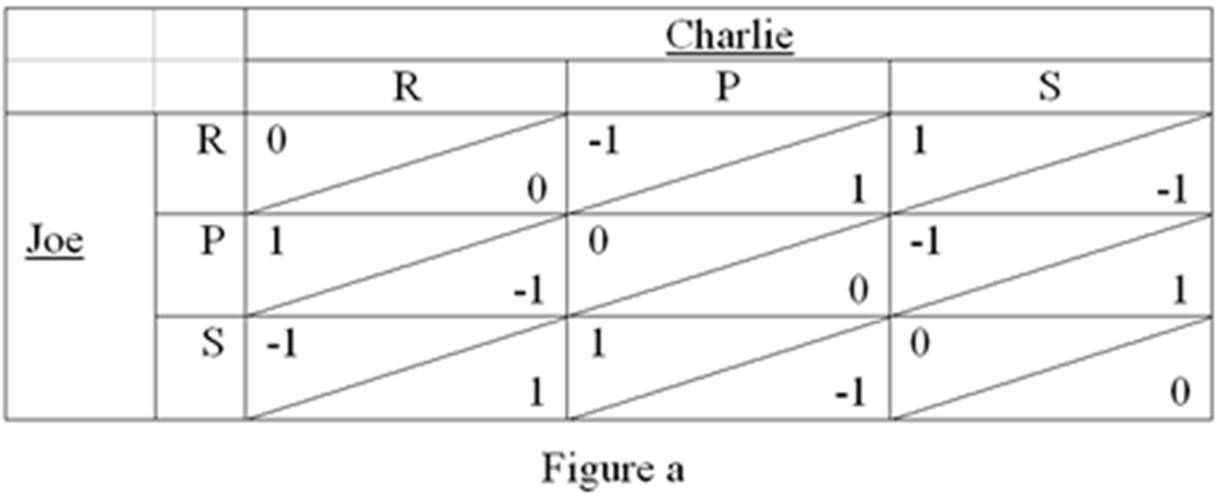A change in any of the ceteris paribus conditions for demand leads to a
A) a good going from an inferior good to a normal good.
B) movement along the demand curve.
C) shift of the demand curve.
D) change in supply.
Answer: C
You might also like to view...
What are the main influences on the quantity of real money that people and businesses plan to hold?
What will be an ideal response?
Refer to Figure a. Charlie and Joe both want to ride shotgun with their mother, so they play a game of rock-paper-scissors to determine who gets to sit in the front seat. In the table, -1 represents a loss, 1 a win and 0 a tie, and Joe's payoff is shown in the upper left-hand corner of each cell, while Charlie's appears in the lower right-hand corner. What is the Nash equilibrium?

A. Charlie chooses rock, Joe chooses rock
B. Charlie chooses rock, Joe chooses paper
C. Charlie chooses paper, Joe chooses scissors
D. There is no Nash equilibrium.
Investment, as a part of GDP, includes:
A. spending on productive inputs such as stocks, bonds, and other types of financial instruments. B. any goods that are bought by firms who plan to use those purchases to produce other goods and services in the future, rather than consuming them. C. consumption goods that are purchased by households. D. any item you buy that you are looking for a return on over time.
The amount of a product that people are willing and able to purchase at a specific price is referred to as the:
a. demand. b. quantity demanded. c. law of demand. d. consumption function. e. purchasing power.